-
Acer buergerianum
Common Name: Trident Maple
This deciduous, medium sized tree (maximum height of approx 45 feet) has orange-brown peeling bark. Its leaves are 3-inch-ide and tri-lobed, a glossy green color above and paler underneath. This maple’s roots have a high moisture content, and are susceptible to frost damage.
-
Aesculus flava
Common Name: Yellow Buckeye
The Yellow Buckeye can grow to more than 110 feet in height. Its leaves are broad, flat, and palmately compound, usually with five leaflets each with a short stalk. The fruit of this tree is poisonous to humans, and often is eaten by squirrels.
-
Amelanchier arborea
Common Name: Downy Serviceberry
This deciduous tree grows in partial shade to full sun, and has alternate, simple, oval to oblong, 5-13 cm long leaves. Squirrels, rabbits, chipmunks, mice, and at least 40 bird species either eat the fruit or browse the twigs and leaves.
-
Aralia spinosa
Common Name: Devil’s Walkingstick
This small tree can be identified by its huge bipinnately compound leaves (an average leaf has over 100 leaflets!) and stout prickly trunk (hence the name Devil’s Walkingstick). Butterflies and wasps love the tree’s flowers in late summer.
-
Asimina triloba
Common Name: Pawpaw
Pawpaw grows less than 25 feet, with feather-veined leaves in leaflets arranged in a wedge-shape. In shade, it grows tall and more widely branched. Some trees produce fruit that is like a papaya, and tastes like a blend of banana, mango, and melon.
-
Betula nigra
Common Name: River birch
The River birch grows to 40 to 70 feet tall and features lustrous, medium-green leaves and cinnamon-colored bark (sometimes has exposed inner bark).
-
Carpinus caroliniana
Common Name: American Hornbeam
The American Hornbeam grows 20- 30 feet in height with alternate, oval, long-pointed leaves with doubly-toothed edges. The flowers produced are yellowish-green 1 to 2 inch hanging catkins, and its bark is brownish-gray to bluish-gray; typically with a fluted trunk.
-
Carya tormentosa
Common Name: Mockernut Hickory
The Mockernut Hickory grows slowly up to 80 feet tall. The tree has grey, furrowed bark and large leaves (one leaf grows up to 20 inches long). Apart from their size, the leaves are identifiable by their shiny yellowish-green color on top and pale green below. In the fall the leaves turn bright yellow.
-
Cedrus deodara
Common Name: Deodar Cedar
The Deodar Cedar’s 1 to 2 inch long, sharp-pointed evergreen needles have a silvery bloom, giving them a blue-green color. Their scales are deciduous, their cones are upright and 3 to 4 inches long, and their bark is initially smooth and grey-brown, later developing short furrows with scaly ridge tops.
-
Cercis canadensis
Common Name: Eastern Redbud
The Eastern Redbud’s leaves are simple, cordate in shape, 3 to 5 inches long, and thin and papery. The tree’s fruit is very showy, pea-like, pink- purple in color, clustering along stems in early spring. The bark is initially smooth and brown; later it becomes dark gray, ridged and furrowed/scaly.
-
Chionanthus virginicus
Common Name: Fringe Tree
The Fringe Tree is a shrubby tree with beautiful leaves and white, fringe-like flowers.
-
Cornus florida
Common Name: Flowering Dogwood
The Flowering Dogwood, deciduous and fast-growing to 10-20 feet tall, is known for its beautiful white blossoms. The flowers unfold from the gray winter flower buds before the leaves come out, and the white- pink bracts are showy, often mistaken for the flower themselves.
-
Crataegus viridis
Common Name: Winterking Hawthorn
Growing 20 to 30 feet tall, Winter King Hawthorn is a fine winter specimen. The tree is very dense with inconspicuous thorns, making it an ideal hedge tree. Dark green deciduous leaves turn shades of bronze, red, and gold in autumn before dropping. Little blossoms persist even in the winter.
-
Hamamelis vernaslis
Common Name: Vernal Witchhazel
Vernal Witchhazel has a rounded habit which typically grows 6-10 feet tall with a somewhat larger spread. The tree is notable for its extremely early and lengthy bloom period. Ovate, dull green leaves (2-5 feet) turn an attractive golden yellow in autumn.
-
Ilex opaca
Common Name: American Holly
The American Holly matures to about 20-30 feet tall. It features a variety of color over the seasons: during the winter months, bright red berries sprout against deep green foliage, and in the springtime, creamy white flowers bloom.
-
Juglans nigra
Common Name: Black Walnut
Black Walnut is a large (100-130 feet) deciduous tree with grey-black, deeply furrowed bark. Its leaves are alternate, 30-60 cm long, odd-pinnate with 15-23 leaflets, the largest leaflets located in the centre, 7-10 cm long and 2-3 cm broad. The tree requires a lot of sunlight to grow.
-
Juniperus virginiana
Common Name: Eastern Redcedar
The Eastern Redcedar has dark green leaves, blue berry-like cones, scale-like leaves, and stripy, fibrous bark.
-
Magnolia grandiflora, 'Bracken's Brown Beauty'
Common Name: Bracken’s Brown Beauty Magnolia
The Bracken’s Brown Beauty is one of the cold-hardy magnolia selections that can grow 30 to 50 feet high. It is compact and dense, with six-inch leaves that are a lustrous green on top and a rusty brown underneath.
-
Magnolia grandiflora, 'DD Blanchard'
Common Name: DD Blanchard Magnolia
DD Blanchard Magnolia is a dense-growing tree that can reach 30 feet tall. Its pyramidal growth habit displays glossy dark-green foliage with cinnamon-colored felt textured underneath, and large white fragrant flowers.
-
Magnolia grandiflora, 'Little Gem'
Common Name: Little Gem Magnolia
The Little Gem is a slow-growing cultivar with an upright growth habit reaching a maximum height of 25 feet. The tree produces alternate, simple, dark-green leathery leaves and large flowers.
-
Magnolia macrophylla
Common Name: Bigleaf Magnolia
Bigleaf Magnolia is a mid-sized deciduous tree with a maximum height of 50 feet. Its giant leaves can grow as much as 30 inches long and the flowers can be a foot wide! The fruit is a cone-shaped pod containing large red seeds, and the tree has shallow roots.
-
Magnolia tripetela
Common Name: Umbrella Magnolia
The Umbrella Magnolia has smooth, gray bark and relatively few branches. It boasts leaves nearly 2 feet long, 8 inches across, and gathered at the end of the twigs; they have the look and texture of a banana. This tree has white blossoms, and looks like a smaller-leafed Bigleaf Magnolia.
-
Magnolia virginiana
Common Name: Sweet Bay Magnolia
The Sweet Bay Magnolia, native to the U.S. southeast, is a dense shade tree with fragrant, creamy white flowers. Its growth ranges between 10 and 60 feet. Its leaves are a glossy pale green and have a silvery underside.
-
Malus species
Common Name: Native Crabapple
The Native Crabapple is a small, thorny, deciduous tree. In the spring, pink, white, or red flowers sprout, and late summer into fall and winter can produces fruit. The tree’s maximum height hovers around 40 feet.
-
Nysssa sylvatica
Common Name: Blackgum
Blackgum are among the first to change color in the fall! This tree, which may grow up to 75-80 feet tall, has bark that ranges from reddish brown to steel gray and develops deep irregular ridges. Another little known fact is that it’s not uncommon for a Blackgum to reach 400 years old.
-
Ostrya virginiana
Common Name: Eastern Hophornbeam
The Eastern Hophornbeam is a slender understory tree that grows 20 to 30 feet tall. Its leaves are alternate, simple, 2 to 4 inches, and oblong with narrowed tips and doubly toothed edges. Its light brown to reddish-brown bark divides into thin scales that peel away from the trunk.
-
Oxydendrum arboreum
Common Name: Sourwood
Sourwood, maturing at up to 30 feet tall, has a pyramidal crown shape that blooms white flowers in the spring months. In the autumn months, its deep glossy green leaves turn to rusty orange and crimson red, making it a lovely back-to-school indicator.
-
Pinus taeda
Common Name: Loblolly Pine
Loblolly Pine is a fast growing windbreak tree growing up to 80 feet tall. Its yellow-green needles can become up to nine inches long and usually grow in bunches of three. It produces cones that are 3 to 6 inches long, red-brown, and have very sharp spines.
-
Quercus alba
Common Name: White Oak
White Oak presides in the forest world with a broad, round, dense head, and wide, sprawling branches. Its leaf is dark-green in summer, and the tree has an interesting, flaky bark.
-
Quercus coccinea
Common Name: Scarlet Oak
Scarlet Oak has deeply lobed, shiny green leaves that grow up to 6″ long and remain during the winter. The tree grows between 60 to 80 feet tall and produces reddish brown acorns, 1/2 inch-1 inch long.
-
Quercus falcata
Common Name: Southern Red Oak
The Southern Red Oak grows in sandy, upland soils and is found in mixed forests. A moderate sized to tall tree, its bark is strong and coarse-grained. Leaves are variable but usually have a prominent pair of lobes toward the leaf tip.
-
Quercus lyrata
Common Name: Overcup Oak
The overcup oak is a large tree with simple, alternate leaves, 6 to 10 inches long. The leaves have 5 to 9 lobes with irregular sinuses and a hairy white underside. Its bark is gray-brown and scaly, and this oak can thrive in periodically wet, bottomland.
-
Quercus muehlenbergii
Common Name: Chinkapin Oak
Chinkapin Oak is identifiable by its oblong, pale green, glossy leaves and thin, light gray, flaky bark. This rounded crown, medium-sized tree can reach heights of up to 80 feet high. Male flowers are yellow-green long catkins, and female flowers are green to reddish, very small in leaf axils.
-
Quercus nutalli
Common Name: Nuttal Oak
Nuttal Oaks have alternate, simple, 4-8 inch long leaves, deeply divided into 5-7 narrow, long-pointed lobes ending in a few bristle-tipped teeth and wide sinuses between lobes. Its bark turns from smooth gray to dark and furrowed with flat, scaly ridges as it matures. The tree can grow on poorly drained clay flats and low bottoms.
-
Quercus pagoda
Common Name: Cherrybark Oak
Cherrybark Oak is often confused with the Southern Red Oak. Its leaves are alternate, simple, five to eight inches long, in five to nine bristle tipped lobes.
-
Quercus phellos
Common Name: Hightower Oak
A naturally uniform growth habit and branching structure as well as lustrous dark green leaves create an ideal lawn or street tree. Leaves turn yellow in fall before dropping cleanly from the tree. Narrow, pyramidal habit to 20 feet tall, 15 feet wide; ultimately 55 feet tall, 35 feet wide.
-
Quercus phellos
Common Name: Willow Oak
Willow Oak is a deciduous tree in the red oak family. Most commonly found growing on lowland floodplains, often along streams, it is a medium-sized tree growing to 60-90 feet tall. Leaves are bright green with a downy underside, and are shaped like willow leaves.
-
Quercus rubra
Common Name: Northern Red Oak
Northern Red Oaks are great street trees because they tolerate pollution and compacted soil well. This tree grows to 60 to 75 feet tall and provides a lot of shade. The leaves are alternate, simple, 4 to 8 inches long with pointy lobes.
-
Quercus shumardii
Common Name: Shumard Oak Shumard
Oaks can grow up to 60 feet tall, in either a pyramidal or spreading shape. This tree grows well on moist, well-drained bottomland soils. Leaves are alternate, broadly obovate, with varying sinus depth.
-
Quercus stellata
Common Name: Post Oak
A member of the white oak group, the Post Oak is relatively drought-resistant and tends to be a small- to medium-sized tree with broad, flat, pinnately-lobed leaves with smooth tips. This tree grows well in rocky or sandy ridges.
-
Sassafrass albidum
Common Name: Sassafras
Sassafras, with thick, grey to brown deeply-furrowed bark, can grow 30 to 60 feet tall. This tree produces brightly colored leaves in the summer and fall, and has a round, blue fruit, attractive to birds. This tree is found in upland and bottom-land forests, forming thickets in abandoned fields.
-
Styrax americana
Common Name: American Snowbell
The American Snowbell has gray, mottled, and smooth bark. Its flowers are white and bell-shaped with 5 petals.
-
Stryax japonica
Common Name: Japanese Snowbell
Japanese Snowbell is a slow-growing, deciduous tree which matures to be 20 feet tall. It prefers moist but well drained soil, and produces white, fragrant, bell-shaped blossoms and medium-green, ovate leaves.
-
Taxodium ascendens
Common Name: Pond Cypress
Pond Cypress trees serve as ecotones (a place where two habitats meet), creating an environment where wildlife from both the wet prairie and the bald cypress forest mingle. Very similar to the bald cypress, bark is more deeply ridged, the needles spiral around their stems, and they grow in close proximity to each other.
-
Taxodium distichum
Common Name: Baldcypress
Baldcypress grows 50 to 70 feet in height. Its bark is reddish-brown and fibrous, its branches are distinctly horizontal, and its foliage is spirally arranged along the stems. Prefers marshy wetlands.
-
Ulmus alata
Common Name: Winged Elm
Winged Elm is named because of the wing-like growths along the branchlets, which are often irregular and appear as warty growths on the sides of the twigs. Dark green leaves with a smooth upper surface and paler, hairy undersides. Grows from 40 and 60 feet tall, with brownish-grey bark. Adapts well to both dry, gravely soils or moist, well-drained areas.
-
Ulmus americana
Common Name: American Elm
American Elm prefers moist, deep, rich soils, and is one of the first trees to come into flower each year. Their leaves have asymmetrical bases, doubly serrated margins, and prominent veins that run straight out to the edge of the leaf. The leaves vary in size and the bark is gray-brown with flat, intervening ridges.
-
Ulmus parvifolia
Common Name: Lacebark Elm (Chinese Elm)
The Lacebark Elm grows between 20 and 60 feet tall, and does well even in poor soils. The tree has exfoliating bark which sheds in thin flakes and can have orange-brown inner bark. Leaves are broad and flat with double teeth and winged fruit. Also known as Chinese Elm.
-
Zelkova serrata
Common Name: Japanese Zelkova
Japanese Zelkova is a medium-sized shade tree in the Elm family that matures at about 60 feet tall. It grows best in full to partial sun, and prefers moist, well-drained, deep soils but is very adaptable and tolerant to heat, drought, and pollution. Its leaf is alternate, ovate, and serrated.
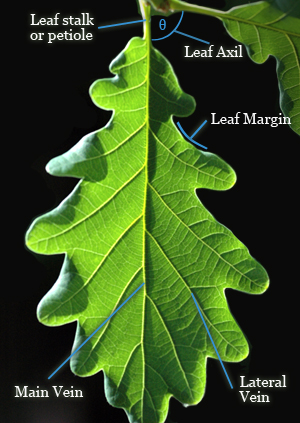
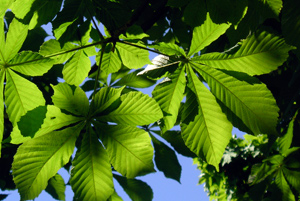 Palmate compound leaf
Palmate compound leaf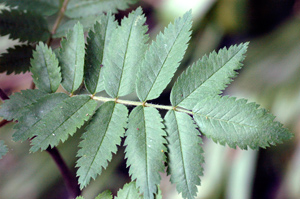 Pinnate compound leaf
Pinnate compound leaf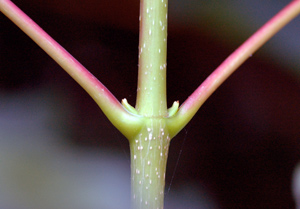 Leaf arrangement or phyllotaxis is another feature of leaves that may help in you in identifying a tree is how they are arranged on the shoots or twigs of the tree.
Leaf arrangement or phyllotaxis is another feature of leaves that may help in you in identifying a tree is how they are arranged on the shoots or twigs of the tree.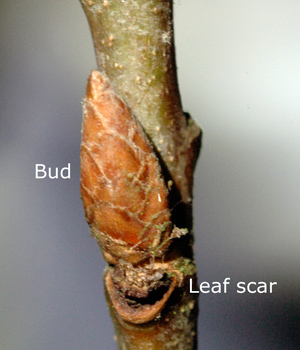
 When examining shoots and twigs, it is sometimes useful to look for lenticels. Lenticelsare small areas on the stem, where the cells are less densely packed so as to allow for the exchange of gases.
When examining shoots and twigs, it is sometimes useful to look for lenticels. Lenticelsare small areas on the stem, where the cells are less densely packed so as to allow for the exchange of gases.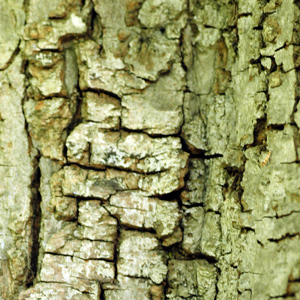


















































No comments:
Post a Comment